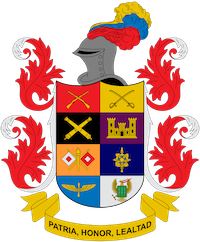A model for a Representational Theory of Capital
Abstract
Once the idea about the representation in the abstract side of the economy of capital in the real side of the economy was stated, the purpose of this paper is to offer a formal model of what this “representational theory of capital” consists in. In a way, the idea that financial instruments are property titles representing claims over real goods is a commonsensical one if considered at microeconomic level; however, I argue that such concept of representation serves to foster our understanding at a macroeconomic level as well. Such claim, to my knowledge, is a novel one.
Downloads
References
Brazil: Law No. 10.406 of January 10, 2002 (Civil Code). Available online at: https://www.wipo.int/wipolex/en/details.jsp?id=9615.
Boianovsky, Mauro. “Beyond Capital Fundamentalism: Harrod, Domar and the History of Development Economics,” a CHOPE Working Paper # 2015-12, October 2015, forthcoming in Cambridge Journal of Economics, 2018. https://doi.org/10.2139/ssrn.2673688
Bortis, Heinrich. “The real and the financial section of a monetary production economy in the perspective of classical-Keynesian political economy,” 2016. Available at: https://www.unifr.ch/withe/assets/files/Publikationen/Bortis-Real-Financial-Sector.pdf.
Braun, Eduard, and David Howden. “The rise and fall of the subsistence fund as a resource constraint in Austrian business cycle theory,” in Review of Austrian Economics (2017), 30: 235-249. https://doi.org/10.1007/s11138-016-0347-y
Braun, Eduard, Peter Lewin, and Nicolas Cachanosky. “Ludwig von Mises’s approach to capital as a bridge between Austrian and Institutional economics,” 2016, available at: https://papers.ssrn.com/sol3/papers.cfm?abstract_id=2748937. https://doi.org/10.2139/ssrn.2748937
Cachanosky, Nicolas, and Peter Lewin. “Roundaboutness is not a mysterious concept: A financial application to Capital Theory,” in Review of Political Economy, 2014. https://doi.org/10.2139/ssrn.2411022
Endres, Anthony M. and David A. Harper. “Carl Menger and his followers in the Austrian Tradition on the nature of capital and its structure,” in the Journal of History of Economic Thought, Volume 33, Number 3, September 2011. https://doi.org/10.1017/S1053837211000198
Endres, Anthony M. and David A. Harper. “Menger on the Nature of Capital and Its Structure: A Reply,” in the Journal of History of Economic Thought, Volume 36, Number 1, March 2014. https://doi.org/10.1017/S1053837214000066
Garrison, Roger W. “Austrian Capital Theory,” in the Austrian Economics University 2016, Mises Institute, July 25, 2016. Available at: https://mises.org/library/austrian-capital-theory-3.
Hahn, Ludwig Albert. Economic Theory of Bank Credit. Translated by Clemens Matt and with an introduction by Harald Hagemann. Oxford, UK: Oxford University Press, 2015. https://doi.org/10.1093/acprof:oso/9780198723073.001.0001
Hahn, Ludwig Albert. The Economics of Illusion – A Critical Analysis of Contemporary Economic Theory and Policy. New York, NY: Squier Publishing Co., Inc., 1949.
Harcourt, G. C. Some Cambridge Controversies in the Theory of Capital, in the Journal of Economic Literature, Volume 7, Number 2 (June 1969), pages 369-405, published by the American Economic Association.
Hayek, Friedrich A. “The ‘Paradox’ of Saving” (1929/31), in Prices & Production and Other Works - F. A. Hayek on Money, The Business Cycle, and the Gold Standard. Auburn, AL: Ludwig von Mises Institute, 2008.
Hayek, Friedrich A. The Collected Works of F. A. Hayek, Volume XII. The Pure Theory of Capital. Chicago, IL: The University of Chicago Press, 2014.
Hendrickson, Joshua R., and Alexander William Salter. “Money, Liquidity, and the Structure of Production,” 2015, working paper available at: http://ssrn.com/abstract=2567014. https://doi.org/10.2139/ssrn.2567014
Horwitz, Steven. “Capital Theory, Inflation and Deflation: The Austrians and Monetary Disequilibrium Compared,” in Journal of the History of Economic Thought, 18, Fall 1996, pages 287-318. https://doi.org/10.1017/S105383720000328X
Horwitz, Steven. “Language, monetary exchange, and the structure of the economic universe – An Austrian-Searlean synthesis,” chapter 5, pages 75-88, in Economics and the Mind, edited by Barbara Montero and Mark D. White. New York, NY: Rutledge, 2009.
Huerta de Soto, Jesús. Money, Bank Credit, and Economic Cycles. Auburn, AL: Ludwig von Mises Institute, 2006.
Hume, David. Essays, Moral, Political, and Literary, Part II, Essay I, Of Commerce (1752). Indianapolis, IN: Liberty Fund, Inc., 1987.
Jones, Charles I., and Dietrich Vollrath. Introduction to Economic Growth. Third edition. New York, NY: W. W. Norton & Company, Inc., 2013.
Lachmann, Ludwig M. Capital and Its Structure. London, UK: Bell & Sons, Ltd., on behalf of the London School of Economics and Political Science, 1956 (reprinted by the Ludwig Von Mises Institute, Auburn, Alabaman, 2007).
Laidler, David. The Demand for Money – Theories, Evidence & Problems.4th Edition. New York, NY: HarperCollins College Publishers, 1993.
Lewin, Peter. Time, Change, and Complexity: Ludwig M. Lachmann’s Contributions to the Theory of Capital in Advances in Austrian Economics, Volume 3, 1996, pages 107-165. https://doi.org/10.1016/S1529-2134(96)03008-6
Lewis, Paul. Subjectivism, Social Structure and the Possibility of Socio-economic order: The Case of Ludwig Lachmann. Forthcoming in the Journal of Economic Behavior and Organization, 2018.
Rueff, Jacques. El Orden Social. Madrid, Spain, Aguilar Publicaciones, 1964.
Smithin, John, and Jeffrey Lau. “The role of money in capitalism,” in the International Journal of Political Economy, 32, 3, Fall 2002, pages 5-22). https://doi.org/10.1080/08911916.2002.11042878
Smithin, John. “Alternative Approaches to the Theory of Economic Growth,” in Rethinking the Theory of Money, Credit, and Macroeconomics, forthcoming, 2018.
Solow, Robert M. “A Contribution to the Theory of Economic Growth,” in The Quarterly Journal of Economics, Volume 70, Number 1 (February, 1956), pages 65-94. https://doi.org/10.2307/1884513
Vasak, Karel. Human Rights: A Thirty-Year Struggle: the Sustained Efforts to give Force of law to the Universal Declaration of Human Rights. UNESCO Courier 30:11, Paris, France: United Nations Educational, Scientific, and Cultural Organization, November 1977.













